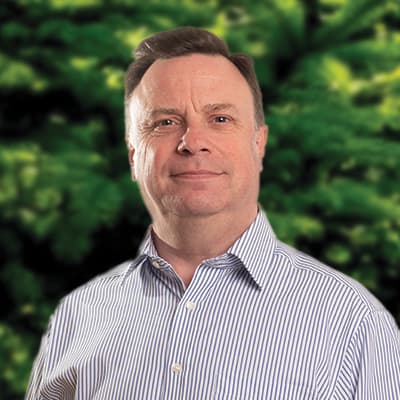
Phil Devine
Does China’s ground-breaking involvement in the BorWin 6 grid connection project point to greater international cooperation in the HVDC connector market?
Flexible HVDC technologies in support of renewables
When American electrical engineer Peter Cooper Hewitt (1861-1921) patented the mercury arc valve in 1902, he created the first non-mechanical AC/DC rectifier, making HVDC power transmission easier to achieve. Up until the 1970s and the introduction of Line-Commutated Connectors (LCC), Hewitt’s invention remained the dominant technology in HVDC converters.
Today, Voltage Source Converters (VSCs) provide sophisticated capabilities that enable both phase and modulation to be altered, making it relatively easy to connect grids that may even be running on different frequencies. VSCs also provide additional features such as AC voltage control, reactive power support and black start capability.
The need for HVDC connectors has been growing rapidly as the world moves towards renewable energy sources. While traditional power generation assets can be sited close to the source of demand, this is not always achievable with renewable sources. So, the energy generated may need to be transmitted over long distances.
History of supply chain discretion
In China, in December 2020, for instance, the State Grid Corporation (SGCC) –the world’s largest utility company – added a new 970-mile 800kV HVDC line to carry power generated from solar and wind sources in Tibet to central China. In total, SGCC has so far built 31 UHV projects covering 25,500 miles (41,000 kilometres), with a transforming (converting) capacity of over 450 GVA (GW).
Until recently, however, there has been very little use of Chinese experience and technology in Western HVDC projects. Geopolitical concerns in Western nations about the security of key infrastructure is exemplified by the banning of Huawei from major telecoms infrastructure projects in the USA, UK, Japan, Australia, New Zealand and other countries. While similar concerns may have a role to play in the apparent reticence to use Chinese technology, the more likely reason is that ESOs have concerns about maintenance and spares for critical equipment when they’re sourced from such distant suppliers. Although the technology is comparable to that of Western suppliers, a risk-averse approach has raised doubts about the ability of suppliers from the East to deliver projects in the West.
As a result, in the Western hemisphere, the market for connectors is dominated by just three manufacturers: ABB, GE/Alstom, and Siemens. Japan’s Hitachi and Mitsubishi are also leading providers of technology globally. As ABB is owned by Hitachi, Siemens is the only European-owned manufacturer.
TenneT’s BorWin6 welcomes Eastern players
So, the fact that SGCC subsidiaries Global Energy Interconnection Research Institute Co., Ltd. and C-EPRI Electric Power Engineering Co., Ltd. (GEIRI and C-EPRI) are part of a consortium that has won the TenneT contract for the BorWin 6 grid connection system is significant. BorWin 6 is the sixth offshore grid connection system that links offshore wind farms in the North Sea to onshore converters in Germany. The system is currently the largest wind power grid-connected project in the region with a rated voltage of ±320 kV and a connection capacity of 980MW. It will be built by US-based McDermott, in cooperation with GEIRI and C-EPRI. It’s also anticipated C-EPRI will be responsible for supplying the converter stations, including valves, controls, and cooling.
An HVDC offshore converter platform will be located 118 miles (190 kilometres) offshore in a water depth of up to 131 feet (40 meters). Electricity generated from offshore wind farms will be converted into direct current and transported to an onshore converter station located 28 miles (45 kilometres) onshore near Büttel, Germany.
Global partners to help meet demand
In a report in Offshore Engineer, the COO of TenneT, Tim Meyerjürgens, acknowledged that the involvement of partners from the wider global manufacturing base was partly driven by the need to maintain the pace of HVDC development. “As a transmission system operator, we will need many reliable partners in the coming years to enable the offshore expansion at the desired pace and with the targeted connection capacities.”
As well as involving Chinese capability in a major European project, other innovative features of BorWin 6 include a direct connection between the wind turbines and the offshore platform, with no need for transformer stations at each wind farm. This reduces both the cost and the maintenance requirements for the project.
Although the BorWin 6 project contract was announced before the outbreak of war between Russia and Ukraine – and the subsequent scramble to decouple European economies from dependence on Russian gas and oil – the issue of energy security and the involvement of Chinese state-backed companies in energy grids is an issue that is certain to attract a lot of attention.
It’s no secret that China has ambitions to build an international grid, with HVDC connections that circle the globe and connect continents. Such super grids were proposed by President Xi Jinping in his 2011 book The Third Industrial Revolution. UK researchers at the University of Birmingham’s Energy Institute are also investigating the feasibility of regional super grids that would link the European Union, North Africa, the Middle East, Russia, South East Asia, Oceania, and both North and South America.
Europe’s energy security still top concern
The ground-breaking involvement of GEIRI and C-EPRI in BorWin 6 is helping TenneT to accelerate the move to bring renewable energy to European grids more quickly by avoiding potential bottlenecks caused by high demand placed on just a few existing Western suppliers. It remains to be seen, however, how Governments will react as the need for energy security is placed more center stage as a result of the conflict in Ukraine.
In the longer term, however, greater global cooperation and a broadening of the supply chain seem inevitable if the move towards renewables is to accelerate to meet growing electricity demand.
PSC is helping utilities and other clients around the world address, survive and thrive in the face of today’s diverse challenges.
Contact us to start collaborating on your next project.
